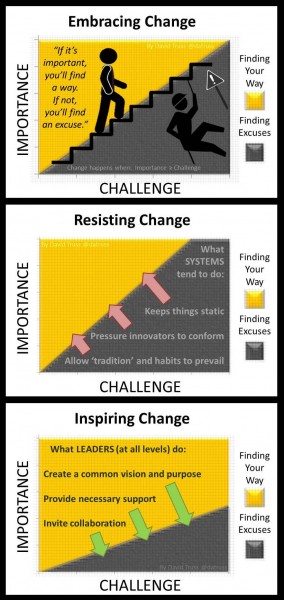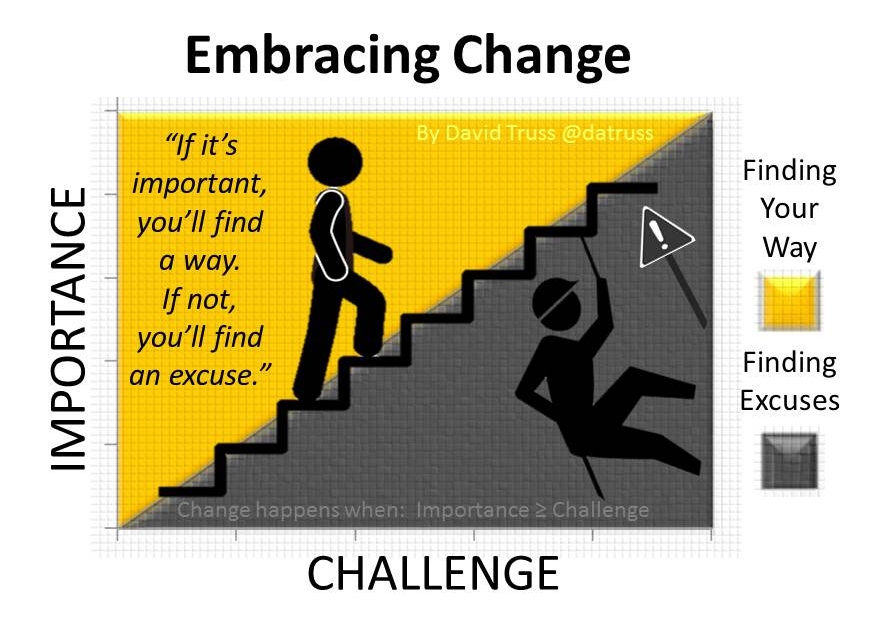3 Images on Leading Change
by David Truss • • 0 Comments
I enjoy using images to share ideas. In a post on my Pair-a-Dimes blog, I shared the ‘Embracing Change’ image, also shared below. As I said in the post:
In a post on my Pair-a-Dimes blog, I shared the ‘Embracing Change’ image, also shared below. As I said in the post:
 In a post on my Pair-a-Dimes blog, I shared the ‘Embracing Change’ image, also shared below. As I said in the post:
In a post on my Pair-a-Dimes blog, I shared the ‘Embracing Change’ image, also shared below. As I said in the post:“…we’ need to recognize that:
* Change isn’t usually easy.
* Change only happens when we create a need.
* Change is not a thought or a discussion, but an action.
* The time to act is now.
* Change isn’t usually easy.
* Change only happens when we create a need.
* Change is not a thought or a discussion, but an action.
* The time to act is now.
“If it’s important, you’ll find a way. If not, you’ll find an excuse.”
The idea is simple. The greater the importance we place on something, the greater the challenge we are willing to face. We will find a way! However, if it is not important enough, then it is much easier to make excuses than it is to make the effort to face the challenge or to change.
Change happens when: Importance > Challenge.“
Despite saying, ‘the idea is simple’, I’ve come to realize that there are a few nuances about the original image that could be explained in a bit more detail than I provided. I’ve also created a couple more images, ‘Resisting Change’ and ‘Inspiring Change’ to contribute further to the conversation on change. If change happens when importance is greater than challenges, what can we do to increase importance and reduce challenges?
1. Embracing Change
One of the key elements of this image is the 1:1 relationship represented by the 45 degree slope. Any point on that slope (where I’ve placed the stairs) has the relationship of Importance = Challenge. Anywhere above that slope represents a point where Importance is greater than Challenge (and so we are likely to find a way to change). Anywhere below the slope represents a point where Challenge is greater than Importance (and so we are likely to find the challenge too great to change).
So ultimately, when we are implementing change we would want to create an environment where we either increase the importance or where we decrease the challenges we face. Accepting a 1:1 ratio is not leading. Furthermore, without 3 Images on Leading Change | Connected Principals:

